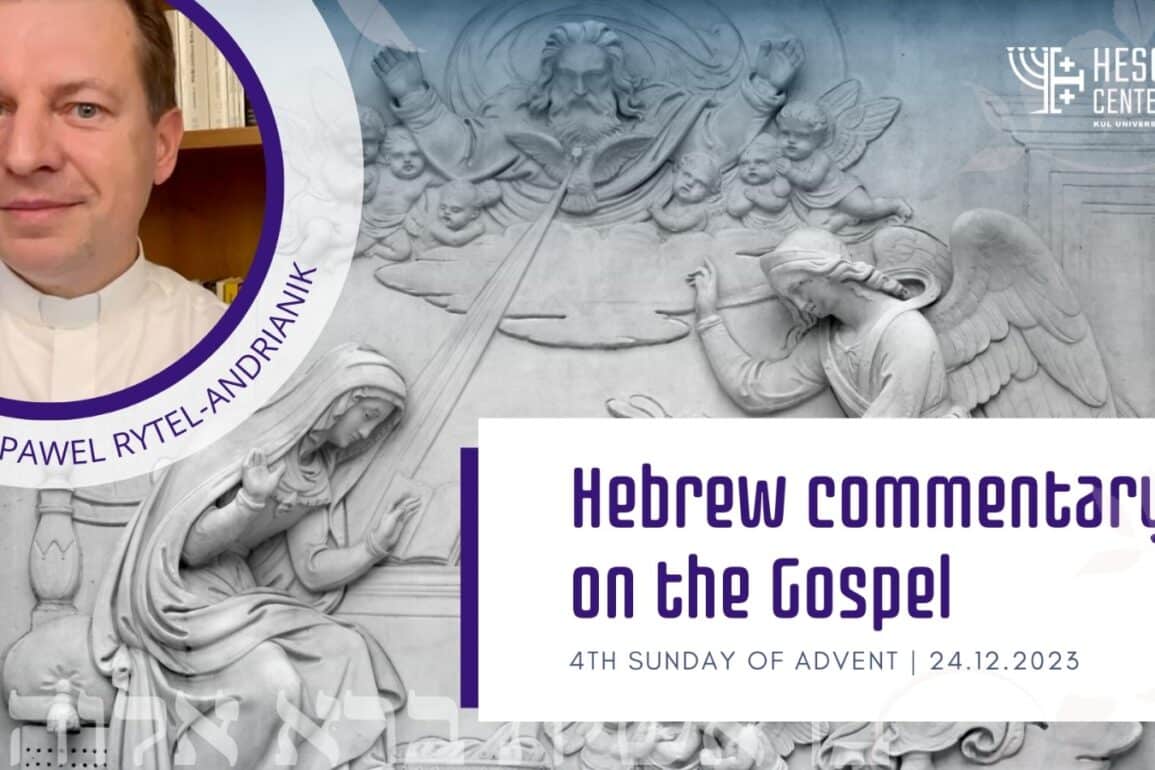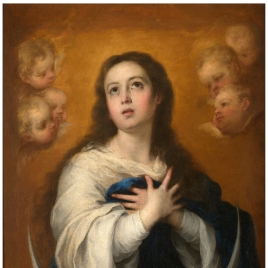The last week of Advent is dedicated to the liturgy, specifically to Mary, as is the third week to St. John the Baptist. This year, only Sunday remains this week, as Monday is Christmas. So let’s pay all the more attention to the gospel of the Annunciation,” writes Fr. Paweł Rytel-Andrianik, biblical scholar and editor, head of the Polish section of Vatican Radio and the Vatican News service, in a commentary for Heschel Center of the KUL University the for Sunday, December 24.
We publish the entire text of the commentary:
“Hail Mary”.
The world’s oldest inscription of Mary is written in Greek. It is found on the base of a column from the temple that stood at the site of the Annunciation in Nazareth. These are the words “XE MAPIA” (Chaire Maria), a reference to the first words spoken to Mary by the archangel Gabriel, which we translate as “Hail Mary.” In the original Greek, “Chaire” means “rejoice.”
The name Mary
There are about a hundred hypotheses to explain the name “Mary.” Some derive its meaning from mar (bitter) + yam (sea), which would be reminiscent of the bitter life in Egyptian slavery (see Exodus 1:14) and the passage through the sea. St. Jerome, in a very free translation, or rather paraphrase, saw here a combination of two Hebrew words ‘or (light) + yam (sea), hence the Latin title Stella Maris (Star of the Sea), patroness of sailors. Others, on the other hand, believe that the name was adopted from the Egyptian word merari i.e. beloved/a, which seems very likely.
Elizabeth’s aunt?
When reading the gospel of the Annunciation, it is also worth reflecting on the words of Scripture: “your relative Elizabeth”. What kind of kinship was the angel talking about? It’s hard to clarify, but one can refer to early Christian sources. Thus, St. Hippolytus (+236) states that St. Anne had a sister named Sobe, who was the mother of St. Elizabeth. According to this hypothesis, St. Elizabeth would have been Mary’s aunt’s sister. St. Hippolytus probably took this claim from apocryphal writings and later recorded it in a liturgical book written in Greek called the Menologium. It is difficult to verify this hypothesis now, but at the same time, it is impossible to ignore a hypothesis from such an ancient time.
The first shrines of the Mother of God – Kathisma – Bethlehem – Matarieh
Between Jerusalem and Bethlehem can be seen the recently discovered foundations of a church from around 390. This place is called Kathisma. The name comes from the gr. kathizō (to rest, sit down). It was here that the Blessed Mother told St. Joseph that she would soon bring forth the Child. This is mentioned in ancient writings (Protoevangelium of James 17:2nn; Armenian Infancy Gospel 8:1nn). The early Christians attached extraordinary importance to this place, which attests to the antiquity of this building.
Nearby is already the Basilica of the Nativity, where in the basement is the cave where, according to tradition, Jesus was born. The birthplace is marked by a star with a Latin inscription that reads in translation: “Here Jesus Christ was born of the Virgin Mary.” The first church was erected on this site as early as 326, thanks to the efforts of Empress Helena.
The Holy Family was forced to flee to Egypt. To this day, the site of Matarieh in Cairo is indicated, where, according to tradition, she was supposed to have stayed. Especially in Egypt, Mary is revered by Christians and Muslims alike, who recognize her as the prophet’s mother.
This is just an example of information about the Blessed Mother’s life related to the Annunciation and Christmas. Early Christian and Mariological literature is very rich in this respect.
About the author:
Rev. Paul Rytel-Andrianik is a doctor in Oriental Studies from Oxford University as well as a doctor in Biblical Studies and Archaeology from Studium Biblicum Franciscanum in Jerusalem. Former spokesman for the Polish Bishops’ Conference (2015-2020) and then director of the Office of Foreign Communications of the Polish Episcopate. Since October 2022, he has been deputy director of the Abraham J. Heschel Center for Catholic-Jewish Relations at the Catholic University of Lublin (KUL) and since July 2023, head of the Polish section of Vatican Radio and the Vatican News service.










